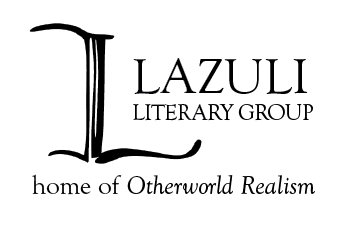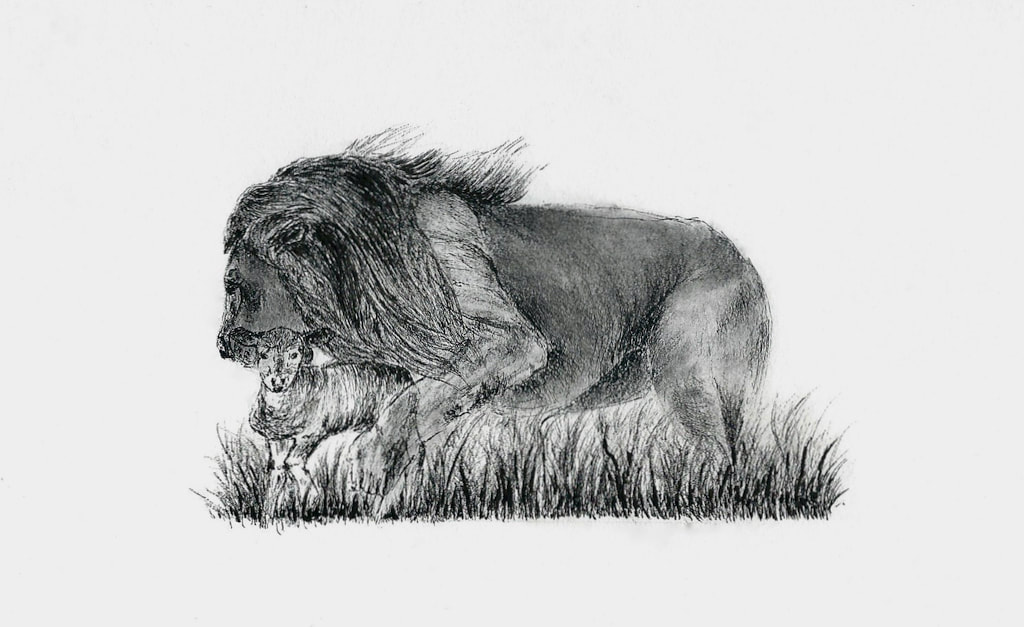At the Mad Hatter-March Hare art gallery
Every picture has a secret to keep.
– Peter Neumeyer
Well . . . What is it?
What do you see?
A wounded lion.
A wounded lion who seems . . .
Seems to have ingested a lamb.
Ah, your imagination, of course.
Yes, regard the mourning eyes.
The part-lion-part -lamb lines.
Yes, lion lines appear . . .
Superimposed over lamb lines.
Ah! She painted the lamb first, then the lion.
A lion washes over a lamb; a lamb bleeds through the lion.
The tender heart forms the fierce, the gentle forms the strong –
The artist’s self-portrait as a child!
Monet at the Minneapolis Art Institute
a partial ekphrastic
Spring-eluent,
ineluctable genesis erasing
winter burials: flights of stairs,
three-story buildings,
sculpted ice,
our burned bone marrow.
You enchant us with green Eros and pink Equipoise,
charm us out to join earth's electric pulses
and purposive lavender rain.
Yet Monet's Rocks at Belle-Ile* disarm me most.
Am i walking Monet's Breton Beach, negotiating
that whirlpool rearranging the scene?
Is Monet's the only sun receiving sea-light?
Who says the sea suffers into color no light her own?
A great grandmother cradling
me into her each splashing
light-act of primary red, yellow and blue delving
into precarious purple struggling
to be green, she reigns
in her paisley light and shadow shawl;
I flow into and out of mud feeling people stare
while Belle-rock refuges me . . .
someone behind me whispers,
My soul is in this one.
Care(fully) I turn . . .
There is no one . . . or is some One
still everywhere changing
right here everything
where no one's footsteps leave
where some One remains to complete a rainbow?**
*The poem refers specifically to Monet’s Le Rocher du Lion painted in 1886 off the isolated Breton peninsula of Quiberon.
**Echoes from E. E. Cummings’ poem, Spring is a Perhaps Hand.
Blow out your candles,
the world is lit by fire.*
She blows, and her lips become flute song,
her eyes lapis lazuli buntings fluttering
in their nests; she blows, and the wind floats
her hair, shedding cherry blossoms, into
the starry, starry night; she blows, and light
waves and particles rock and roll over
midnight’s blue silk cape; she blows, and roots grow,
spiral from her feet joining the deep
latticework of trees; she breathes to realize
why she has never felt so complete.
*From Tennessee Williams’ The Glass Menagerie.
Every picture has a secret to keep.
– Peter Neumeyer
Well . . . What is it?
What do you see?
A wounded lion.
A wounded lion who seems . . .
Seems to have ingested a lamb.
Ah, your imagination, of course.
Yes, regard the mourning eyes.
The part-lion-part -lamb lines.
Yes, lion lines appear . . .
Superimposed over lamb lines.
Ah! She painted the lamb first, then the lion.
A lion washes over a lamb; a lamb bleeds through the lion.
The tender heart forms the fierce, the gentle forms the strong –
The artist’s self-portrait as a child!
Monet at the Minneapolis Art Institute
a partial ekphrastic
Spring-eluent,
ineluctable genesis erasing
winter burials: flights of stairs,
three-story buildings,
sculpted ice,
our burned bone marrow.
You enchant us with green Eros and pink Equipoise,
charm us out to join earth's electric pulses
and purposive lavender rain.
Yet Monet's Rocks at Belle-Ile* disarm me most.
Am i walking Monet's Breton Beach, negotiating
that whirlpool rearranging the scene?
Is Monet's the only sun receiving sea-light?
Who says the sea suffers into color no light her own?
A great grandmother cradling
me into her each splashing
light-act of primary red, yellow and blue delving
into precarious purple struggling
to be green, she reigns
in her paisley light and shadow shawl;
I flow into and out of mud feeling people stare
while Belle-rock refuges me . . .
someone behind me whispers,
My soul is in this one.
Care(fully) I turn . . .
There is no one . . . or is some One
still everywhere changing
right here everything
where no one's footsteps leave
where some One remains to complete a rainbow?**
*The poem refers specifically to Monet’s Le Rocher du Lion painted in 1886 off the isolated Breton peninsula of Quiberon.
**Echoes from E. E. Cummings’ poem, Spring is a Perhaps Hand.
Blow out your candles,
the world is lit by fire.*
She blows, and her lips become flute song,
her eyes lapis lazuli buntings fluttering
in their nests; she blows, and the wind floats
her hair, shedding cherry blossoms, into
the starry, starry night; she blows, and light
waves and particles rock and roll over
midnight’s blue silk cape; she blows, and roots grow,
spiral from her feet joining the deep
latticework of trees; she breathes to realize
why she has never felt so complete.
*From Tennessee Williams’ The Glass Menagerie.
M. Ann Reed is a poet, research scholar and teacher of English Literature and Theory of Knowledge. She has taught in Malaysia, Ukraine, Bosnia-Herzegovina, and China where traditional cultures regard literature a medical art. Her post-doctoral research studies the soul-mending arts of traditional and modern English poetry and drama. Her study, "Following the life force, . . . Seamus Heaney's treatment of grief in the poem, 'Sunlight', has received numerous citations by international researchers in the fields of medicine, psychology, and literature. Her chapbook, making oxygen, is forthcoming in 2020 by Finishing Line Press.

